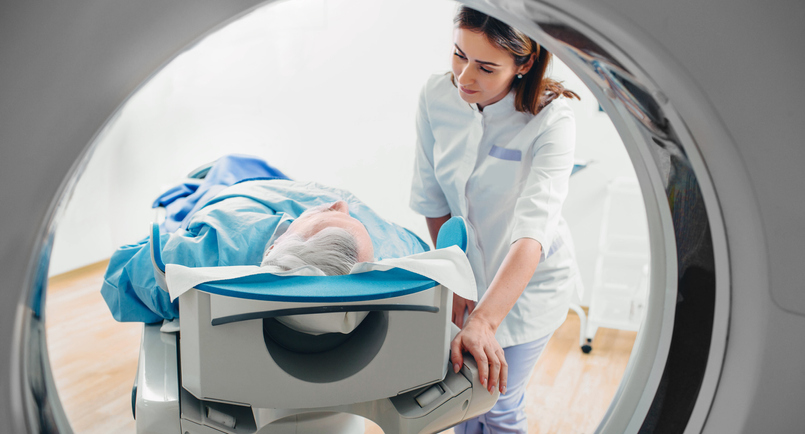Last updated March 24, 2023.
Radiology is the medical specialty that diagnoses diseases and injuries through the use of medical imaging technology. Medical professionals who specialize in radiology are called radiologists. Radiologists may choose to specialize in either diagnostic radiology or interventional radiology. Diagnostic radiology focuses on detecting health issues through medical imaging, while interventional radiology uses these images to complete minimally invasive surgery.
No matter which route a radiologist pursues, they will need to be proficient in taking and reading x-rays, ultrasounds, and MRIs, among other, more advanced imaging techniques. Many times, radiologists will need to draw conclusions from these images and share them with medical professionals in other areas. Collaboration is a crucial component for these healthcare professionals.
Do you like working on a team? Do you have an eye for detail? The specialty of radiology could be the perfect fit. Continue reading below to find out more about postgraduate education in this area and what to expect should you become a practicing radiologist.
Residency
To become a radiologist, a medical graduate must complete a four-year residency program. Getting into radiology residencies can be difficult as many programs are small and offer few seats. During the 2023 Main Residency Match, 194 of 194 offered positions offered across radiology-diagnostic and internal radiology (integrated) were filled. Meanwhile, seven of 10 seats offered in radiation oncology were filled.
Read more about the 2023 NRMP Match data here
Once individuals complete a radiology residency, they may choose to further specialize by pursuing and completing a fellowship. Most radiology subspecialty fellowships last between 1 and 2 years.
Diagnostic radiology subspecialties include hospice and palliative medicine, neurology, nuclear radiology, pain medicine, pediatric radiology, and vascular and interventional radiology. Interventional radiology subspecialties include hospice and palliative medicine, neuroradiology, pain medicine, and pediatric radiology. For complete descriptions of each of these subspecialties, visit the American Board of Radiology’s website.
According to recent data, more and more radiologists are choosing to pursue subspecialty certifications. This is a positive for those in urban areas seeking specialized care—it may be a negative for those in rural areas where general radiologists are hard to come by.
Practicing as a Physician
At present, roughly 48,464 radiologists are practicing in the U.S. The number of radiology positions available each year is strikingly similar to the number of radiology residents graduating, meaning there is no shortage of radiologists just yet!
According to Medscape’s 2022 Physician Compensation Report, radiologists are among the highest-earning physicians with an average annual salary of $437,000 per year. This ranks it eighth among all specialties.
One thing to remember about radiology is that it is a tech-heavy job. Radiologists must be handy with technology and willing to learn as best practices within the specialty change frequently. The best radiologists share common characteristics—they are analytical, good communicators, and organized. Written reports are commonplace in radiology; for this reason, radiologists must hold their own when it comes to writing and editing.
Interested in a radiology clinical experience? AMO has you covered!







Leave A Comment